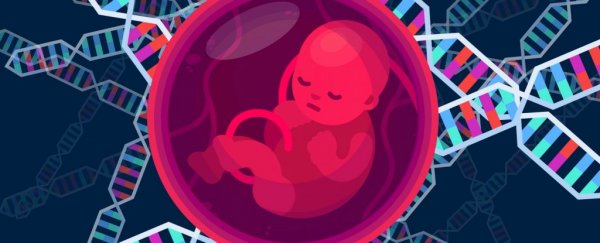We've heard a lot about genetic engineering over the past two decades - and, lately there's been even more hype about a new molecular tool called CRISPR, which acts like a cut-and-paste tool for our DNA.
But what many of us don't realise is that, after years of talking about it, we're on the verge of a major change for society - one where we can edit genes as easily as we give medication today.
As the latest episode of Kurzgesagt so brilliantly explains, just like no one in the '80s believed computers would ever take over everything, most of us today don't really think that genetic editing won't change everything.
And we're wrong, because of CRISPR.
So what exactly is CRISPR? After all, humans have been genetically engineering other species for millennia, by breeding food and pets to have more of the traits we like, and less of the traits we don't.
Once we discovered DNA, we've been figuring out ways to tinker with this process on the back end, too.
Fast forward a few years, and we have genetically engineered mice, genetically engineered humans, and, of course, genetically engineered food.
But while genetic engineering has played an important role in medicine, the existing techniques available up until now have been expensive, slow, and incredibly complicated.
Now, that's all changing. Thanks to CRISPR, the costs of genetic engineering have shrunk by 99 percent basically overnight, Kurzgesagt reports.
Although we're now using CRISPR in humans and other animals, the system was originally found inside bacteria - where it's used as a genetic weapon to stop bacteria being infected by viruses (yes, even microbes get infected, too).
As the video above explains much more beautifully than we can, after a virus has infected a bacteria once, the bacteria keeps a little portion of its DNA locked in a genetic archive called CRISPR.
If it ever gets infected again, this viral DNA is turned into RNA, and is fed into a secret weapon called Cas 9 - an enzyme that hunts down any DNA that matches the one in the archive, and then expertly cuts it out of the bacteria.
"It's almost like a DNA surgeon," Kurzgesagt explains.
So far, so good. But a few years ago, scientists discovered that the CRISPR system is actually programmable, which means that you can tell it any piece of DNA you want removed, put the system into a living cell, and it'll cut that DNA right out of the genome.
Researchers are already using CRISPR to treat disease in animal models, and, as of this month, in humans.
But what we see happening now is - just like the supercomputers of the '80s - nothing compared to what's coming. And that's not just hype.
To fully comprehend exactly what a future with CRISPR might look like, how the system works, and what it all means, you really need to check out the video above, because it's not only fascinating, it's also incredibly important.
What we will say, without giving too much away, is that, if the idea of designer babies makes you uncomfortable, then get ready, because that's a world we're already living in.
